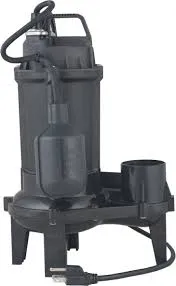Occitan
- Afrikaans
- Albanian
- Amharic
- Arabic
- Armenian
- Azerbaijani
- Basque
- Belarusian
- Bengali
- Bosnian
- Bulgarian
- Catalan
- Cebuano
- Corsican
- Croatian
- Czech
- Danish
- Dutch
- English
- Esperanto
- Estonian
- Finnish
- French
- Frisian
- Galician
- Georgian
- German
- Greek
- Gujarati
- Haitian Creole
- hausa
- hawaiian
- Hebrew
- Hindi
- Miao
- Hungarian
- Icelandic
- igbo
- Indonesian
- irish
- Italian
- Japanese
- Javanese
- Kannada
- kazakh
- Khmer
- Rwandese
- Korean
- Kurdish
- Kyrgyz
- Lao
- Latin
- Latvian
- Lithuanian
- Luxembourgish
- Macedonian
- Malgashi
- Malay
- Malayalam
- Maltese
- Maori
- Marathi
- Mongolian
- Myanmar
- Nepali
- Norwegian
- Norwegian
- Occitan
- Pashto
- Persian
- Polish
- Portuguese
- Punjabi
- Romanian
- Russian
- Samoan
- Scottish Gaelic
- Serbian
- Sesotho
- Shona
- Sindhi
- Sinhala
- Slovak
- Slovenian
- Somali
- Spanish
- Sundanese
- Swahili
- Swedish
- Tagalog
- Tajik
- Tamil
- Tatar
- Telugu
- Thai
- Turkish
- Turkmen
- Ukrainian
- Urdu
- Uighur
- Uzbek
- Vietnamese
- Welsh
- Bantu
- Yiddish
- Yoruba
- Zulu
Telephone: +86 13120555503
Email: frank@cypump.com
Nov . 20, 2024 01:32 Back to list
double suction pump specific speed
Understanding Double Suction Pump Specific Speed
The double suction pump, recognized for its efficiency and design versatility, plays a crucial role in various industrial applications, particularly in water and wastewater management, chemical processing, and power generation. Among the essential characteristics that define the performance of a double suction pump is its specific speed (Ns). Understanding specific speed is essential for engineers and designers who aim to optimize pump selection for maximum efficiency and operational reliability.
What is Specific Speed?
Specific speed, often denoted as Ns, is a dimensionless parameter that characterizes the geometric and hydraulic similarity of pumps. It provides insight into the performance of a pump at a particular flow rate and head. The formula for calculating specific speed is
\[ N_s = \frac{N \sqrt{Q}}{H^{3/4}} \]
Where - \(N\) is the pump rotational speed in RPM (revolutions per minute), - \(Q\) is the flow rate in gallons per minute (GPM) or cubic meters per second (CMS), - \(H\) is the total head in feet or meters.
The specific speed gives engineers a clear indication of a pump's design and application. It helps in determining the best type of pump for specific operational conditions by comparing the performance of different pump designs.
Characteristics of Double Suction Pumps
Double suction pumps are designed with two suction inlets, allowing for an even distribution of hydraulic load on the impeller. This design feature provides several advantages
1. High Efficiency Double suction pumps are known for their high hydraulic efficiency, especially at larger flow rates. Their specific speed can vary significantly based on design, which means they can be tailored for various applications.
double suction pump specific speed

2. Reduced Axial Thrust The symmetric design of double suction pumps minimizes axial thrust, leading to improved mechanical stability and longevity. This characteristic is particularly beneficial in high-capacity applications where conventional pumps may face challenges.
3. Versatility With their varied specific speeds, double suction pumps are suitable for a wide range of applications, from low to high flow rates and heads. Engineers can select a pump with the optimal specific speed to match the operational requirements of their system.
Importance of Specific Speed in Pump Selection
Specific speed serves as a critical factor in the selection of double suction pumps. When engineers are tasked with choosing a pump for a specific application, they often reference the specific speed to ensure that the pump will perform efficiently within the desired parameters.
1. Matching Pump to Application By calculating the specific speed, engineers can match the pump design to the flow rate and head requirements of their system. A pumped fluid that requires a higher specific speed will often necessitate a pump that is optimized for greater efficiencies at those operating conditions.
2. Performance Prediction Specific speed helps predict the performance characteristics of the pump. Pumps with higher specific speeds are typically more efficient at lower head applications, while those with lower specific speeds are suited for higher head scenarios. This knowledge streamlines the design process and ensures effective system integration.
3. Design Optimization Understanding the relationship between specific speed and pump geometry enables engineers to optimize pump designs for improved performance. This aspect is especially important in design projects that require custom or specialized pumps.
Conclusion
The double suction pump’s specific speed is a vital aspect of its operational characteristics, influencing both design and application. By understanding and leveraging specific speed, engineers can effectively choose the right pump for their needs, ensuring optimal performance, reliability, and efficiency. As industries continue to evolve and technologies advance, the importance of specific speed in the selection and design of double suction pumps will only increase, reinforcing its significance in modern engineering practices.
-
Durable & Efficient Submersible Mixed Flow Propeller Pumps Quotes
NewsApr.29,2025
-
BPA-Free Sand Gravel Pump for Aquariums & Industrial Use Terapump
NewsApr.29,2025
-
High-Efficiency Big Capacity Double Suction Pumps Bulk Supply
NewsApr.28,2025
-
High-Performance Vapor Honing Slurry Pumps Durable & Efficient Solutions
NewsApr.28,2025
-
OEM Slurry Pump Engineering Factory Custom Solutions & Durable Pumps
NewsApr.28,2025
-
1HP Sewage Submersible Pump Durable Vertical & WQ/QW Models Supplier
NewsApr.28,2025










